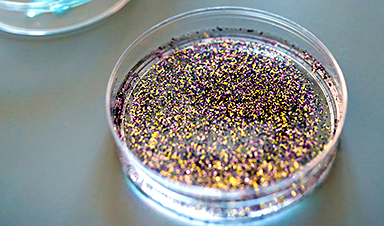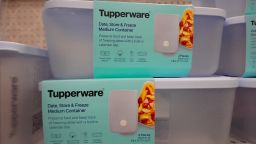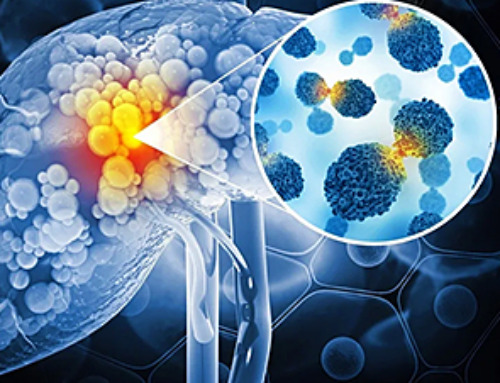Human brain samples collected at autopsy in early 2024 contained more tiny shards of plastic than samples collected eight years prior, according to a preprint posted online in May. A preprint is a study which has not yet been peer-reviewed and published in a journal.
"The concentrations we saw in the brain tissue of normal individuals, who had an average age of around 45 or 50 years old, were 4,800 micrograms per gram, or 0.5% by weight," said lead study author Matthew Campen, a regents' professor of pharmaceutical sciences at the University of New Mexico in Albuquerque.
That increase, however, only shows exposure and does not provide information about brain damage, said Phoebe Stapleton, an associate professor of pharmacology and toxicology at Rutgers University in Piscataway, New Jersey, who was not involved in the preprint.
"It is unclear if, in life, these particles are fluid, entering and leaving the brain, or if they collect in neurological tissues and promote disease," she said in an email. "Further research is needed to understand how the particles may be interacting with the cells and if this has a toxicological consequence."
The brain samples contained 7 to 30 times more tiny shards of plastic than samples from the cadavers' kidneys and liver, according to the preprint.
"Studies have found these plastics in the human heart, the great blood vessels, the lungs, the liver, the testes, the gastrointestinal tract and the placenta," said pediatrician and biology professor Dr. Philip Landrigan, director of the Program for Global Public Health and the Common Good and the Global Observatory on Planetary Health at Boston College.
"It's important not to scare the hell out of people, because the science in this space is still evolving, and nobody in the year 2024 is going to live without plastic," said Landrigan, who was not involved with the preprint.
"I say to people, 'Listen, there are some plastics that you can't escape. You're not going to get a cell phone or a computer that doesn't contain plastic.' But do try to minimize your exposure to the plastic that you can avoid, such as plastic bags and bottles."
The American Chemistry Council, an industry association, told CNN that while "some studies on microplastics have recently garnered headlines, just last month the FDA noted, 'Current scientific evidence does not demonstrate that levels of microplastics or nanoplastics detected in foods pose a risk to human health.'
"Research underway not only helps address current data gaps in our understanding of exposure to microplastics but it also aims to develop improved tools to measure the toxicity of microplastics to humans, said Kimberly Wise White, the council's vice president of regulatory and scientific affairs.
"This work is important given the unvalidated methods often applied by researchers which can lead to unreliable or misleading outcomes, the complex nature of microplastics, and the many variables that can affect human health," she said.
Nanoplastics 'hijack' their way into the brain
For the study, researchers examined brain, kidney and liver tissues from 92 people who underwent a forensic autopsy to verify cause of death in both 2016 and 2024. Brain tissue samples were gathered from the frontal cortex, the area of the brain associated with thinking and reasoning, and which is most affected by frontotemporal dementia (FTD) and later stages of Alzheimer's disease.
"Based on our observations, we think the brain is pulling in the very smallest nanostructures, like 100 to 200 nanometers in length, whereas some of the larger particles that are a micrometer to five micrometers go into the liver and kidneys," Campen said.
Nanoplastics are the most worrisome plastics for human health, experts say, because the minuscule pieces can take up residence inside individual cells.
"Somehow these nanoplastics hijack their way through the body and get to the brain, crossing the blood-brain barrier," Campen said. "Plastics love fats, or lipids, so one theory is that plastics are hijacking their way with the fats we eat which are then delivered to the organs that really like lipids — the brain is top among those."
The human brain is about 60% fat by weight, far more than any other organ. Essential fatty acids, such as omega 3s, are key to the strength and performance of the brain's cells. Since the human body can't produce essential fatty acids on its own, they must come from food or supplements.
Diet is the main route of exposure for micro- and nanoplastics, said Landrigan, who is the lead author of a March 2023 report from the Minderoo – Monaco Commission on Plastics and Human Health, a global consortium of scientists, health-care workers and policy analysts charged with following plastics from creation to final product.
In that report, the consortium determined plastics are associated with harms to human health at every single stage of the plastic lifecycle.
"Some microplastics are also airborne," Landrigan said. "For example, when people are driving down the highway and their tires are abrading on the surface of the highway, a certain amount of microplastic particles are thrown into the air.
"If you live near the coast, some of the microplastic particles that are in the ocean get kicked into the air through wave action," he said. "So ingestion is probably the dominant route, but inhalation is also an important route."
Plastics with ties to cancer
Polyethylene, which is used in plastic bags, films and bottles and is not biodegradable, was the predominant type of plastic found in tissue samples. It was found in greater quantities in the brain than in the liver or kidney, according to the preprint.
Polyethylene was also the predominant type of polymer found in human and dog testicles, according to an August 2024 study by Campen and his team.
The production of various forms of polyethylene, such as polyethylene terephthalate (PET) plastics, are the biggest contributor to the release of the solvent 1,4-dioxane into the environment, according to industry data collected by Defend our Health, an environmental advocacy group.
"The biggest question is, 'OK, what are these particles doing to us?' Honestly there's a lot we still don't know," Landrigan said. "What we do know with real certainty is that these microplastic particles are like Trojan horses — they carry with them all the thousands of chemicals that are in plastics and some are very bad actors."
By invading individual cells and tissues in major organs, nanoplastics can potentially interrupt cellular processes and deposit endocrine-disrupting chemicals such as bisphenols, phthalates, flame retardants, heavy metals and per- and polyfluorinated substances, or PFAS.
Endocrine disruptors interfere with the human reproductive system, leading to genital and reproductive malformations as well as female infertility and a decline in sperm count, according to the Endocrine Society.
"We have some pretty good indications that microplastics and nanoplastics cause harm, even though we are a long way from knowing the full extent of that harm," Landrigan said. "I would say we have enough information here that we need to start taking protective action."
There are many steps individuals can take to reduce their exposure to plastics and their plastic footprint, experts say.
"It's hard to avoid foods wrapped in plastic film but be sure to take the food out of the plastic wrapping before you cook it or put it in the microwave," Landrigan said. "When you heat plastic, that accelerates the movement of the microplastics out of the wrapping into the food.
Invest in a zippered fabric bag and ask the dry cleaner to return your clothes in that instead of those thin sheets of plastic, suggested the Natural Resources Defense Council, an environmental advocacy group. Bring a travel mug to the local coffee store for takeout and silverware to the office to cut back on plastic cups and utensils.
"Don't use plastic bags when you go shopping. Use a cloth bag or a paper bag or a recycle bag. Try to avoid plastic water bottles, if you can possibly do so," Landrigan said.
A March 2024 study found 1 liter of bottled water — the equivalent of two standard-size bottled waters typically purchased by consumers — contained an average of 240,000 plastic particles from seven types of plastics. Some 90% of those were nanoplastics.
"Use a metal or glass drinking cup instead of a plastic cup. Store your food in glass containers instead of in plastic ones," Landrigan said. "Work in your local community to ban plastic bags, as many communities around the United States have now done. There is a lot you can do."
News
The Stunning New Push to Protect the Invisible 99% of Life
Scientists worldwide have joined forces to build the first-ever roadmap for conserving Earth’s vast invisible majority—microbes. Their new IUCN Specialist Group reframes conservation by elevating microbial life to the same urgency as plants and [...]
Scientists Find a Way to Help the Brain Clear Alzheimer’s Plaques Naturally
Scientists have discovered that the brain may have a built-in way to fight Alzheimer’s. By activating a protein called Sox9, researchers were able to switch on star-shaped brain cells known as astrocytes and turn them into [...]
Vision can be rebooted in adults with amblyopia, study suggests
Temporarily anesthetizing the retina briefly reverts the activity of the visual system to that observed in early development and enables growth of responses to the amblyopic eye, new research shows. In the common vision [...]
Ultrasound-activated Nanoparticles Kill Liver Cancer and Activate Immune System
A new ultrasound-guided nanotherapy wipes out liver tumors while training the immune system to keep them from coming back. The study, published in Nano Today, introduces a biodegradable nanoparticle system that combines sonodynamic therapy and cell [...]
Magnetic nanoparticles that successfully navigate complex blood vessels may be ready for clinical trials
Every year, 12 million people worldwide suffer a stroke; many die or are permanently impaired. Currently, drugs are administered to dissolve the thrombus that blocks the blood vessel. These drugs spread throughout the entire [...]
Reviving Exhausted T Cells Sparks Powerful Cancer Tumor Elimination
Scientists have discovered how tumors secretly drain the energy from T cells—the immune system’s main cancer fighters—and how blocking that process can bring them back to life. The team found that cancer cells use [...]
Very low LDL-cholesterol correlates to fewer heart problems after stroke
Brigham and Women's Hospital's TIMI Study Group reports that in patients with prior ischemic stroke, very low achieved LDL-cholesterol correlated with fewer major adverse cardiovascular events and fewer recurrent strokes, without an apparent increase [...]
“Great Unified Microscope” Reveals Hidden Micro and Nano Worlds Inside Living Cells
University of Tokyo researchers have created a powerful new microscope that captures both forward- and back-scattered light at once, letting scientists see everything from large cell structures to tiny nanoscale particles in a single shot. Researchers [...]
Breakthrough Alzheimer’s Drug Has a Hidden Problem
Researchers in Japan found that although the Alzheimer’s drug lecanemab successfully removes amyloid plaques from the brain, it does not restore the brain’s waste-clearing system within the first few months of treatment. The study suggests that [...]
Concerning New Research Reveals Colon Cancer Is Skyrocketing in Adults Under 50
Colorectal cancer is striking younger adults at alarming rates, driven by lifestyle and genetic factors. Colorectal cancer (CRC) develops when abnormal cells grow uncontrollably in the colon or rectum, forming tumors that can eventually [...]
Scientists Discover a Natural, Non-Addictive Way To Block Pain That Could Replace Opioids
Scientists have discovered that the body can naturally dull pain through its own localized “benzodiazepine-like” peptides. A groundbreaking study led by a University of Leeds scientist has unveiled new insights into how the body manages pain, [...]
GLP-1 Drugs Like Ozempic Work, but New Research Reveals a Major Catch
Three new Cochrane reviews find evidence that GLP-1 drugs lead to clinically meaningful weight loss, though industry-funded studies raise concerns. Three new reviews from Cochrane have found that GLP-1 medications can lead to significant [...]
How a Palm-Sized Laser Could Change Medicine and Manufacturing
Researchers have developed an innovative and versatile system designed for a new generation of short-pulse lasers. Lasers that produce extremely short bursts of light are known for their remarkable precision, making them indispensable tools [...]
New nanoparticles stimulate the immune system to attack ovarian tumors
Cancer immunotherapy, which uses drugs that stimulate the body’s immune cells to attack tumors, is a promising approach to treating many types of cancer. However, it doesn’t work well for some tumors, including ovarian [...]
New Drug Kills Cancer 20,000x More Effectively With No Detectable Side Effects
By restructuring a common chemotherapy drug, scientists increased its potency by 20,000 times. In a significant step forward for cancer therapy, researchers at Northwestern University have redesigned the molecular structure of a well-known chemotherapy drug, greatly [...]
Lipid nanoparticles discovered that can deliver mRNA directly into heart muscle cells
Cardiovascular disease continues to be the leading cause of death worldwide. But advances in heart-failure therapeutics have stalled, largely due to the difficulty of delivering treatments at the cellular level. Now, a UC Berkeley-led [...]
























